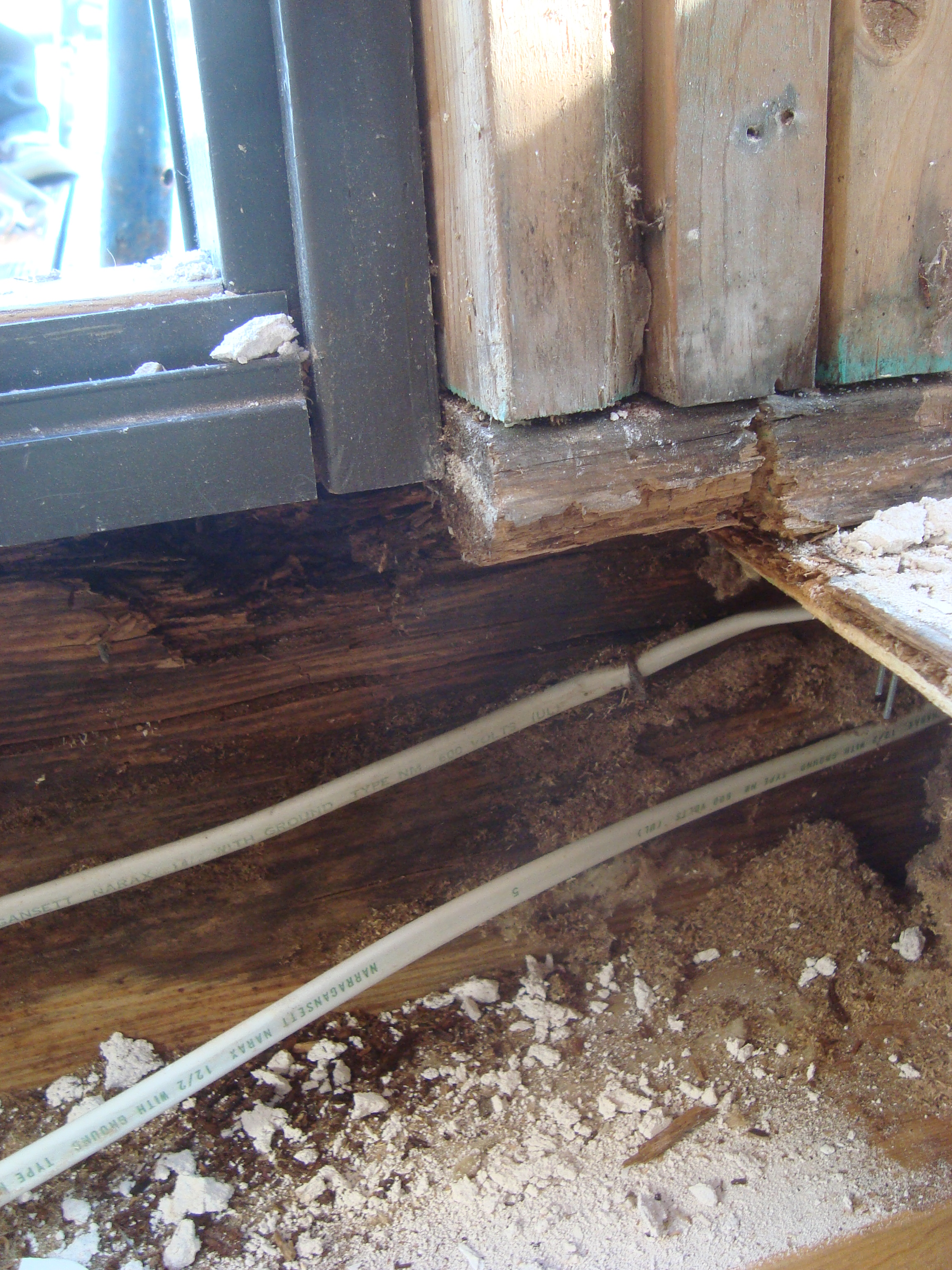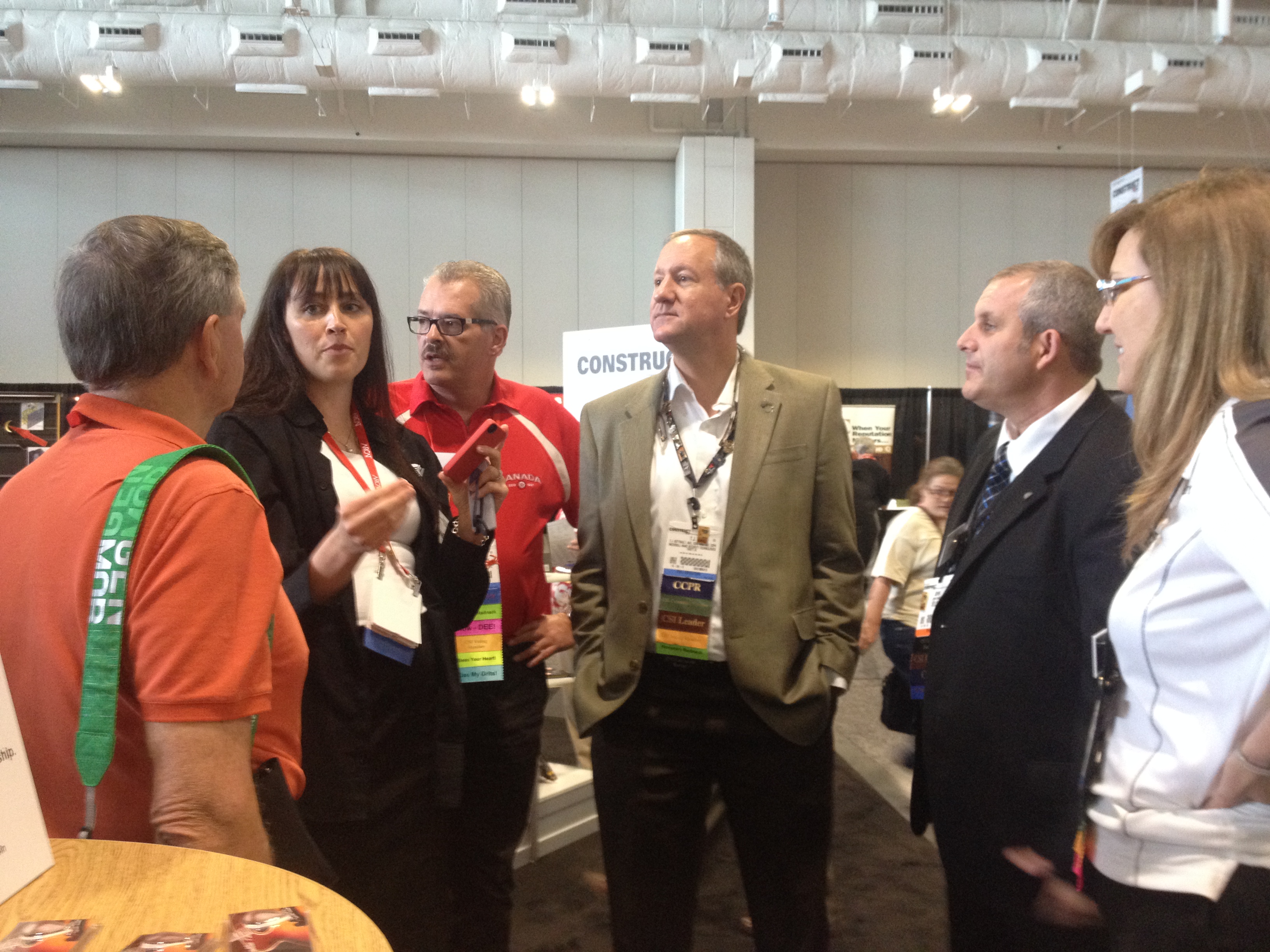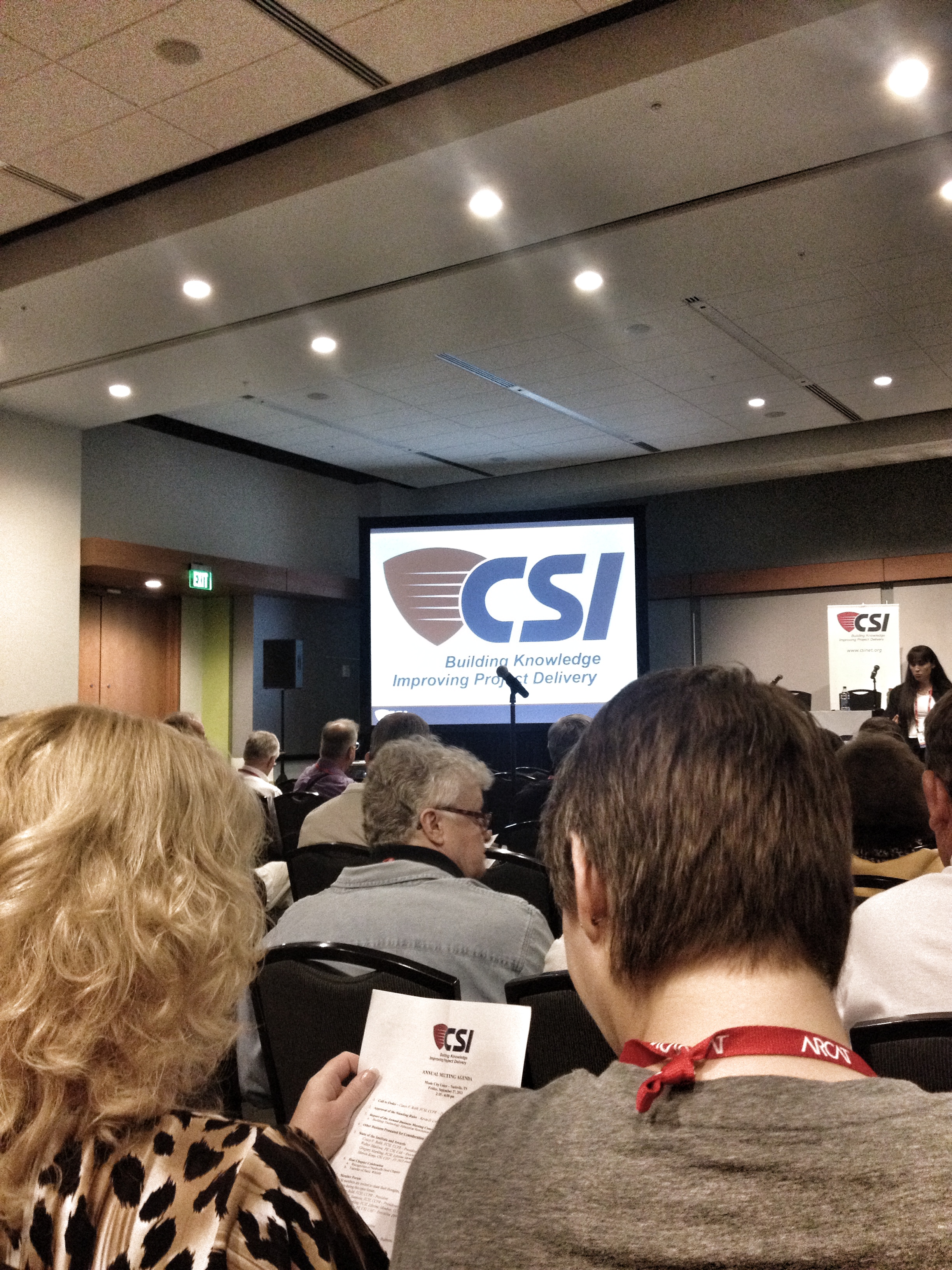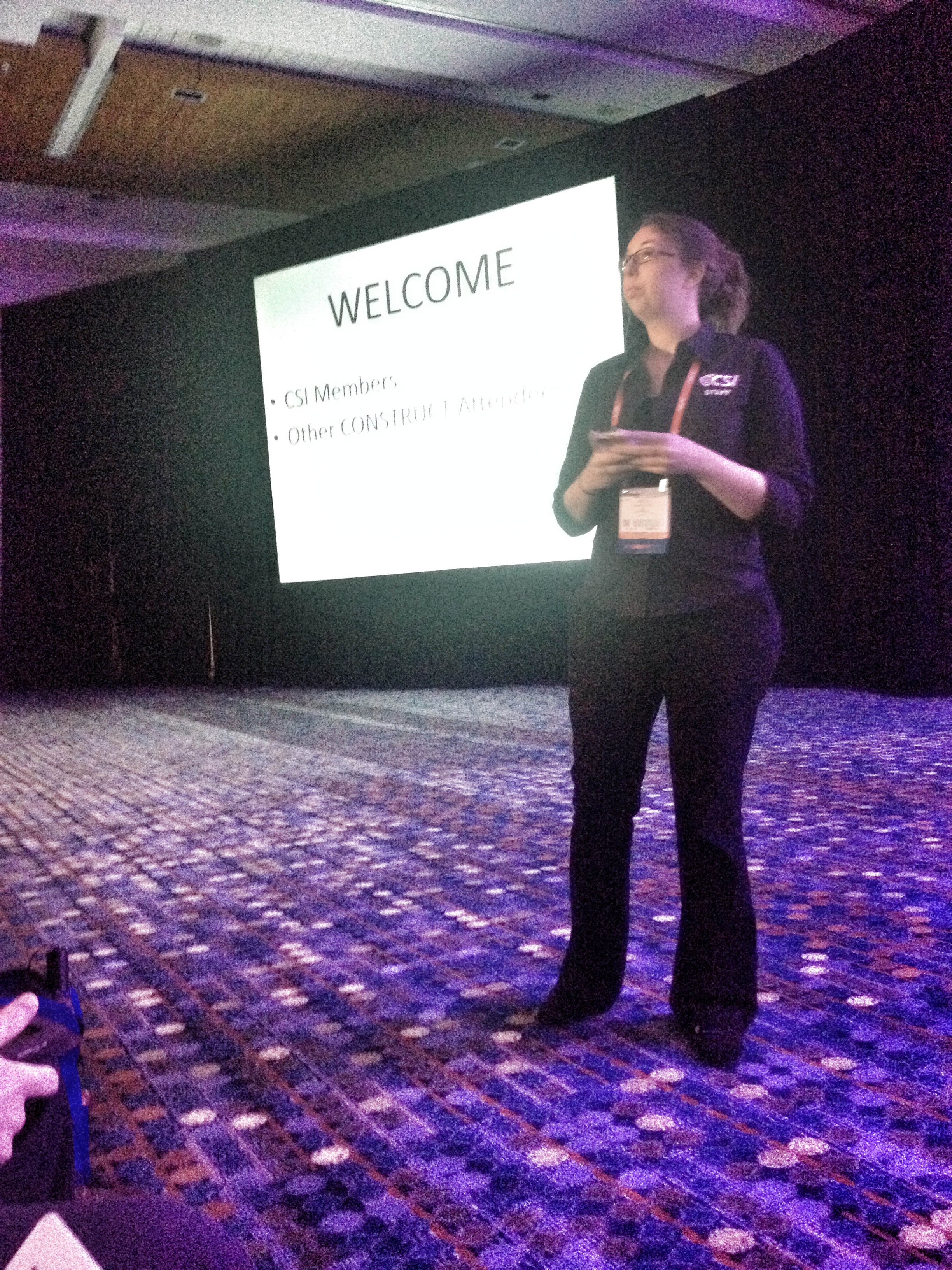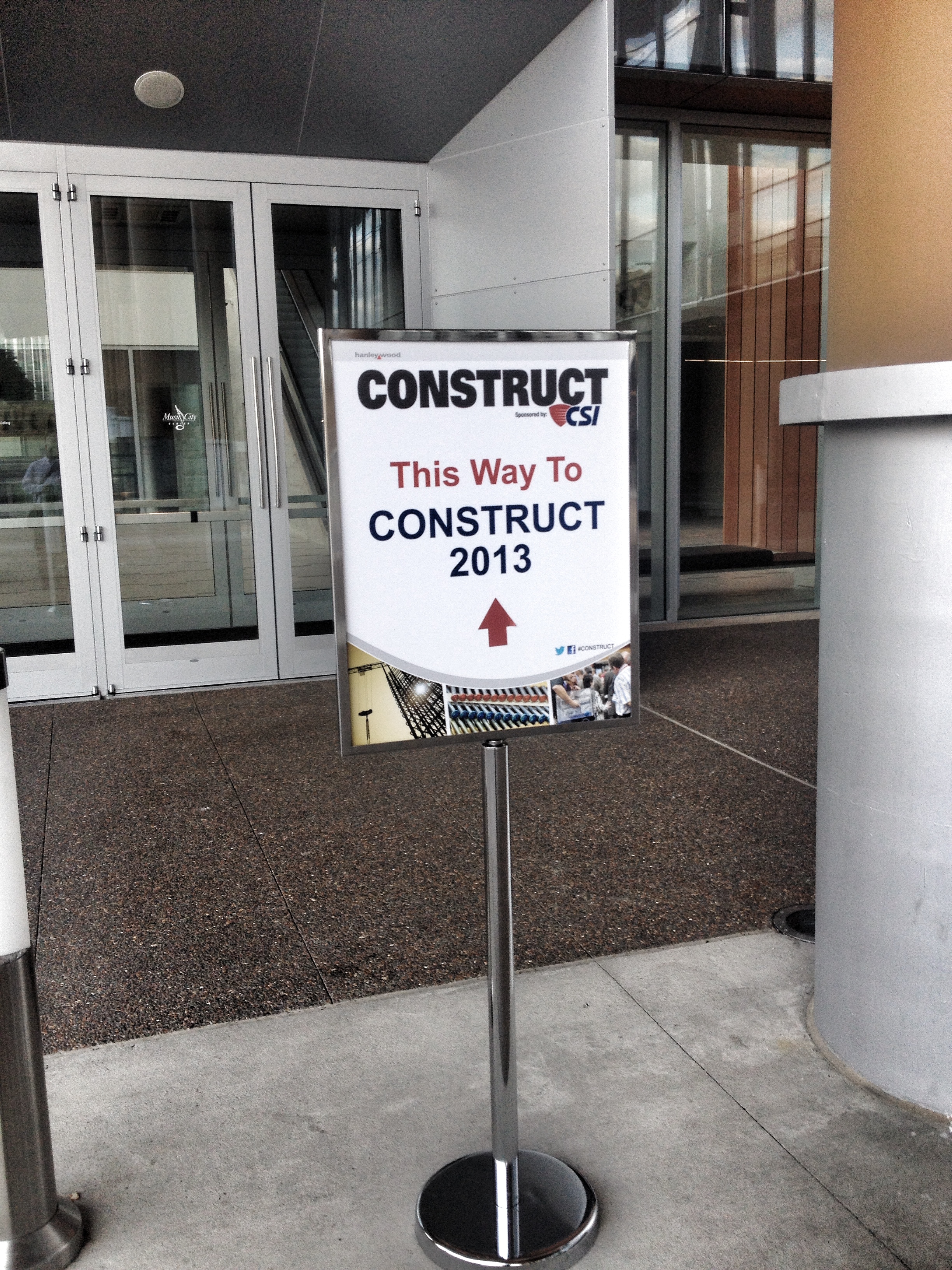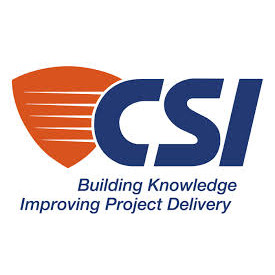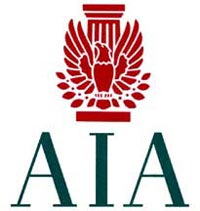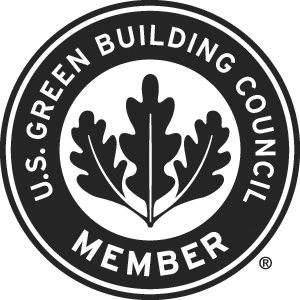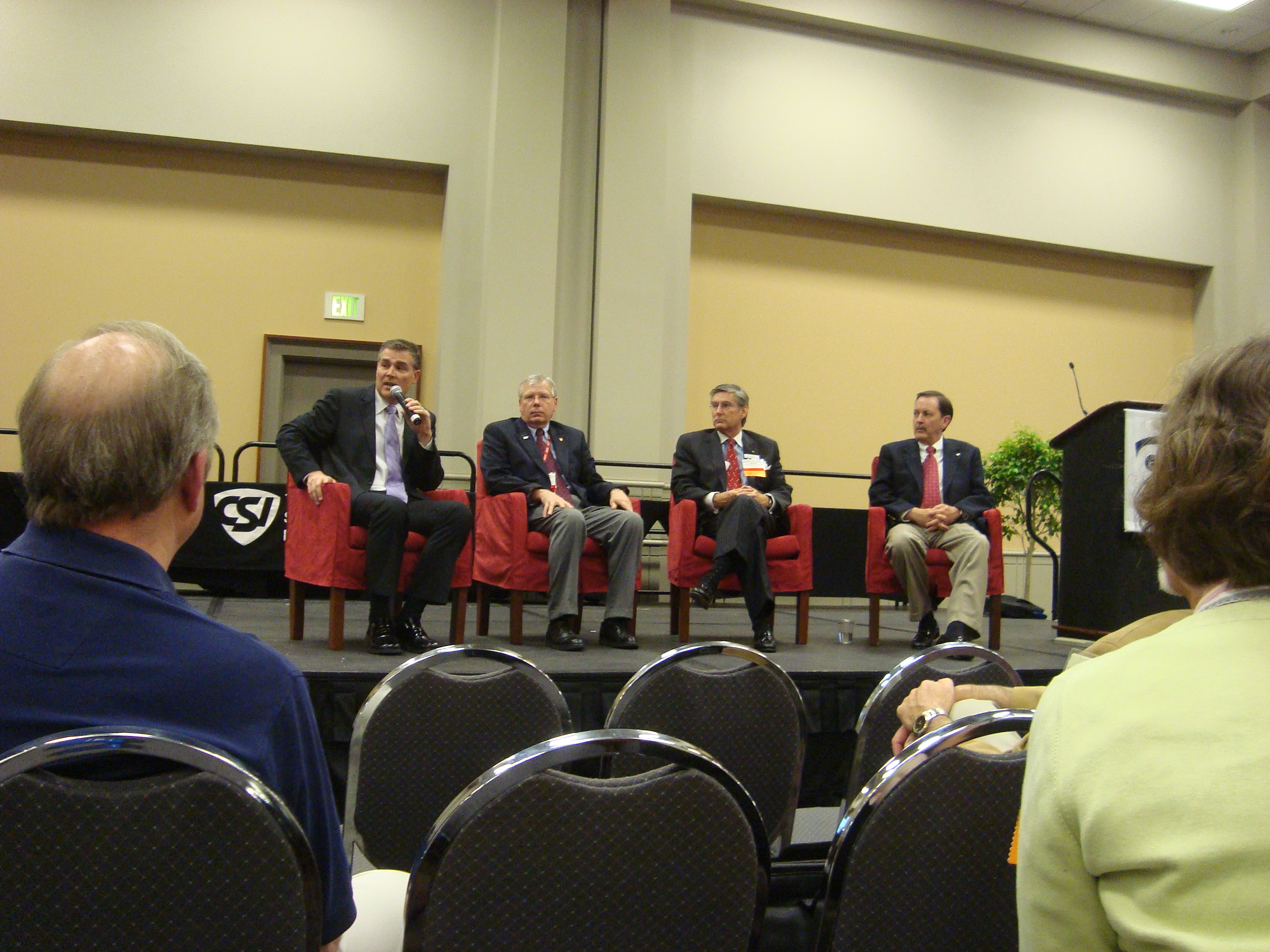by harrisonburgarchitect | Nov 17, 2014 | architecture, Construction Specifications Institute, Harrisonburg Architect
Since I entered the construction profession I have known CSI (Construction Specifications Institute). I was fortunate to start my career in a firm deeply involved with CSI. I give credit to this involvement to my learning the importance of the 4 C’s to a successful construction project. However, this may in fact be the most difficult part of creating a green project. You have to be able to effectively convey the information from design to construction in a Clear, Concise, Correct, and Complete method.
Changing a simple word in a project manual can change the intent of the design. Placing a note that does not effectively convey the design intent on the drawings may cause the performance of the building to suffer upon completion. Missing a note that should have been on the drawings could cause the contractor to install in inferior product that does not meet the goals for the project. It sounds simple, but making sure you follow the 4 C’s in construction document creation may be the most critical aspect of creating a green project.
The Construction Specifications Institute (CSI), is a national professional association that provides format standards to meet the construction industry’s need for a common system of organizing and presenting documents. CSI also provides technical information and publications, continuing education, professional conferences, and product shows to assist the professions involved in creating and sustaining the built environment. Founded in 1948, CSI is the only organization that serves all the major disciplines involved in facility design and construction.
by harrisonburgarchitect | Nov 4, 2014 | Construction Specifications Institute
My friends Sal Verrastro and Greg Markling are sharing their knowledge at an upcoming seminar in Charlotte North Carolina on November 14th.
 Every project claim and dispute starts at a specific moment. Contract administrators who can spot that moment – that missed opportunity to solve a problem and head off a crisis – deliver successful projects on time, on budget, with fewer change orders, and fewer trips to court.
Every project claim and dispute starts at a specific moment. Contract administrators who can spot that moment – that missed opportunity to solve a problem and head off a crisis – deliver successful projects on time, on budget, with fewer change orders, and fewer trips to court.
In this workshop, Sal and Greg – both experienced expert witnesses – will discuss the foundation principles of contract administration, and then guide you through real court cases so you can experience how those principles come into play. Through an entertaining and enlightening series of scenarios, you’ll learn to recognize critical decision points in the project delivery process and in contract administration that can determine potential successes, or crises. You’ll learn the value of asking “How did we get here?”, the answer to “Where do we go now?”, and what a red flag looks like.

“Every piece of the seminar gave me something that I could use when I returned to work the following day,” wrote a past participant. “A better understanding of general conditions, a better way to handle substitutions and a strong knowledge of what can go wrong during design and construction and the red flags that could prevent litigation.”
Objectives:
- Explore the limits of the design professional’s standard of care
- Identify, recognize, and respect the interpersonal dynamics of a construction project and the needs of individual teams
- Understand construction observation and evaluation from each team’s point of view
- Learn to address installation failures and construction defects
- Explore shared responsibility — no one entity is ever entirely at fault
- Discuss the legal implications of choices, and how they relate to the assignment of liability and responsibility
- Clarify the roles and responsibilities of project participants
Register today: http://www.csinet.org/claimsdisputes
Qualifies for 7.0 AIA CES Hours, 7.0 PDH, 7.0 CCCA PDH, 7.0 CCPR PDH
by harrisonburgarchitect | Sep 30, 2013 | architecture, Construction Specifications Institute, Harrisonburg Architect, Leadership
 Construct
Construct has come and gone again. Each year as I build my network through
CSI the show becomes even
more valuable to me. I have the opportunity to reconnect with industry leaders, meet emerging experts, and get a glimpse into the most innovative products available in the building industry. For those new to Construct, it is the one convention in the industry that brings together people from all disciplines (owners, building managers, architects, engineers, product representatives, landscape architects, lawyers, facility managers….) within the construction industry to one place to share ideas, best practices, and knowledge.
The evolution of CSI over recent years has gone from an organization searching for its role in
the industry to an organization leading the industry in building technology information. This has translated into a very important conference for any industry leader involved with high performance building solutions to attend. The power of CSI membership and conference attendance is unmistakable to me as I have posted in the past (
here,
here,
here,
here, and
here).
I did not give a formal presentation at this year’s show as in the past, but was asked to participate in an informal panel discussion on blogging. This session is a good example of how CSI staff works hard to support the members and help them find individual success. The focus of the panel discussion was to share how we do it, how you can do it, and how to be better at doing it (blogging). I cannot say enough about how much the staff means to me in this organization. On a national level I personally know more than half of the employed staff members, consider them friends, and know they are working hard for me. This compared to other organizations where I rarely have a name of a person to call, much less a personal connection, the value of CSI membership is clear.
CSI helps build members success and in return, members help members, and members work tirelessly to support CSI.
Education sessions, product expo, meeting discussions, networking, conversations, and of course lots of FUN take place each year at Construct. This year was no exception of course. The social media crowd has grown to be very vibrant reaching over 2 million impressions on Twitter alone. The show next year will be in Baltimore in early September. If you missed this year, I highly encourage you to attend next year. If you are not ready to jump in the big pond of CSI, think about joining the regional leaders at their conference, or at least get involved in the chapter level and attend monthly meetings. The power and energy you will see from other members that want you to be successful will be awe-inspiring if you take the time to engage, volunteer, and ask for help.
Here are some pics from the event.

by harrisonburgarchitect | Jun 12, 2013 | architecture, Construction Specifications Institute, Harrisonburg Architect, LEED
In the construction industry, like many others, there are many certifications, professional designations, and credentials. So does it add value to you for your project? How do you know it shows added expertise? Should I hire someone who does not have a particular certification? Learning more about what the initials stand for will help you evaluate what matters to you. Looking for someone who has gone through the added training that will benefit your project is a key to selecting the right team.
So let me define some of the more common letters you see after the names of prominent architects:
RA (often not used if a member of AIA) – Registered Architect – this means you are legally empowered to practice architecture. You can start your own firm, seal, stamp, or sign your own drawings, and turn your client’s ideas into reality. For a design project this is the base level designation that shows the person has achieved a certain level of education, experience, and knowledge. Without it, you have no way of knowing if the ‘designer’ has achieved any level of competence in design as measured by testing. Architects are responsible for protecting the public’s health, safety, and welfare, so earning the license is not an easy task. Hiring someone to design your home or business with this designation will give you peace of mind. This is the designation that holds an architect accountable for their actions.

Certifications demonstrate knowledge of the construction process, contractual relationships, and construction contract administration procedures.
AIA – indicates you are an RA and a member in good standing with the American Institute of Architects. You can be an “Assoc. AIA” without being an RA. 
CSI – indicates you are a member in good standing with the Construction Specifications Institute.
NCARB – indicates you hold a National Council of Architectural Review Board certificate which speeds the reciprocity process. Most don’t add this to their signature unless soliciting work that might require licensure in another State in the future.
CDT – The Construction Documents Technology (CDT) Program provides a comprehensive overview for anyone who writes, interprets, enforces, or manages construction documents. By being able to understand and interpret written construction documents, CDTs perform their jobs more effectively. By understanding the roles and relationships of all participants, CDTs improve communication among all members of the construction team.
CCS – A Certified Construction Specifier (CCS) is a skilled product researcher who knows how to investigate and identify cost-effective, efficient solutions, and then communicate those solutions through the specifications. CCS certifications demonstrate advanced knowledge in all aspects of specifications development, including contractual relationships, organization, preparation and enforcement.
CCCA – Certified Construction Contract Administration (CCCA) certification teaches you to develop, administer and enforce construction documentation. CCCA c
LEED AP – The LEED AP credential affirms your advanced knowledge in green building as well as expertise in a particular LEED rating system. The LEED AP BD+C credential suits professionals with expertise in the design and construction phases of green buildings serving the commercial, residential, education and healthcare sectors.
LEED GA – This in an entry-level certification that is required to achieve the LEED AP once you have more experience in green building. The LEED Green Associate credential demonstrates a solid and current foundation in green building principles and practices. From marketers to lawyers, landscape architects to education professionals, and product manufacturers to policymakers, LEED Green Associates enjoy a broad understanding of sustainability that bolsters their careers.
CAPS – The Certified Aging-in-Place Specialist (CAPS) designation program teaches the technical, business management, and customer service skills essential to competing in the fastest growing segment of the residential remodeling industry: home modifications for the aging-in-place. CAPS professionals have the answers to your questions. They have been taught the strategies and techniques for designing and building aesthetically enriching, barrier-free living environments. The CAPS program goes beyond design to address the codes and standards, common remodeling expenditures and projects, product ideas, and resources needed to provide comprehensive and practical aging-in-place solutions. CAPS graduates pledge to uphold a code of ethics and are required to maintain their designation by attending continuing education programs and participating in community service.
CGP – The Certified Green Professional designation recognizes builders, remodelers and other industry professionals who incorporate green building principles into homes— without driving up the cost of construction. Classwork leading to the designation provides a solid background in green building methods, as well as the tools to reach consumers, from the organization leading the charge to provide market-driven green building solutions to the home building industry.
What other certifications do you think add value to your architect? Let me know – I am always looking for a new challenge. Next up for me is the CCCA.
by harrisonburgarchitect | May 27, 2013 | architecture, Construction Specifications Institute, Harrisonburg Architect
The same conversation seems to happen in every organization in the construction industry. How do we get more people involved and active in the organization? How do we get emerging professionals to join? The same ideas are discussed – start a blog, social media, fun events at a local bar, or maybe try a lunch meeting instead of dinner. So what is the answer, why are you involved in professional organizations? What value do you see in giving your time to the industry?
My favorite industry organization is CSI. I will always renew my dues with this organization and know that investing my time in it delivers huge benefits back to me. CSI brings me the most value of any of my other organizations through professional contacts, technical articles, and most important, they make me feel included, valuable, and accepted. To me this is the key to getting more people involved – make them feel needed, wanted, and equal. I look forward to CSI events because I know they are going to be interesting, but also because I know the other people attending want me there and will treat me as an equal. At one of the first CSI meetings I attended out-of-town years ago, I was asked by Mitch Miller to express my opinion to the entire group about the organization – me, one of the youngest people in the room. They wanted to know my thoughts and wanted to include me. That is added value for anyone in any organization.
At a meeting last night of the local AIA chapter, the discussion centered around the future of the chapter and the organization. AIA brings a huge value to the industry for architects and I believe to our clients. However, not all architects join and those that do join, many don’t get involved. The dues are high, the meetings are not held in my town, and I have been reminded that I am not equal many times. So why pay the dues (highest of all the other organizations I belong)? Last night one experienced architect in the room said the most important thing is having the initials behind your name – it helped her advance a career through the public sector. Another idea was you get to participate in the design awards (these awards seem to go to the same firms every year so they have little value to me). Another architect said it is your duty to belong to your industry association: “As a member of this profession you must join, get involved, and advance the profession.” I think these are all great reasons to belong to the AIA. However, that is not a reason to join and be active when there are many other ways to give to your community, advance your career, and be recognized for your work as an equal.
The reason I join a professional organization is to advance my skills. Yes, it is that simple and selfish.
So why did I join AIA (not paid for by my firm, I paid my own membership until I became a partner): it provides me with connections to peers who want to compare notes, teach best practices, and discuss the future. I miss having monthly meetings where I could meet the best and brightest in the industry now that I don’t have local meetings to attend. Getting to know Patricia Jessee, Jim Boyd, Mark Humbertson, Jeff Sties, Kurt Keesecker, Jimmy Grigg, Bill Daggett, Steve Davis, and Candy Smith has allowed me to grow as an architect and better serve my clients. Even if I have not had deep conversations with all of these architects, I know their work, personality, and styles and learn from observation and even emulation. I joined AIA to be a better architect.
What I want more of from AIA is help with being a better architect. I should not have to do all the work to find the experts to learn from, that information should be shared to every member and every member should feel included, valuable, and equal. AIA staff on the national and state level should know my name, know what I do, and know what I need from the organization. They should reach out in a personal way, not in a blind email sent to all members. In our profession, it is very easy to focus on the flashy, expensive design solutions, and the firms with project photography budgets bigger than most of my total design budgets. I need an AIA that promotes the value of all scale of firms and projects and treats me and my small firm as an equal.

by harrisonburgarchitect | Mar 22, 2011 | Construction Specifications Institute, Local Leaders
The Backbone of the Construction Industry
I was struck the other day at a Central Virginia CSI meeting when our current President, Tracie Skipper, clearly at the end of her rope, needed help. For every task she listed, there was a member ready to step in to give their time, efforts, and talents. For every need, she found a willing person to step in to work towards the goal with no pay. Her spirits were lifted, her mood shifted, and it was clear that she found energy from the willingness of others to lift her up and give. It was clear that CVCSI is the backbone of the construction industry in Charlottesville.

“Volunteers do not necessarily have the time; they just have the heart.” Elizabeth Andrew
While I have been involved in many organizations over the years, I have never seen one so close to the edge, bounce back so quickly only by the simple request for support. In an industry that has seen some of the worst economic conditions since the great depression, this organization is thriving. While the membership has slipped this organization is rebounding. There is new energy, new ideas, there is hope that the future is bright for those in the organization and for the industry as a whole.
“It’s easy to make a buck. It’s a lot tougher to make a difference.” ~ Tom Brokaw
It is interesting that this organization, Central Virginia Chapter of the Construction Specifications Institute is not about any one person. The goals are not about building business, although I have seen that happen. The motivation is not for personal benefit, although those involved will tell you there is some gained. This organization, the members that serve, the effort that is given, is directly to benefit all the members of the construction industry, to provide education, connections, and best practices. This organization is focused on creating a greater good for all those in the industry, not just those at the meetings. This organization, working together, brings the latest knowledge, trends, and ideas to the table for all members to equally discuss, learn, and broaden their base. This organization strengthens the construction industry as a whole and the CSI members doing the work deserve our gratitude.
No one is more cherished in this world than someone who lightens the burden of another. Thank you. ~Author Unknown
I am in awe of the work that is done by Tracie Skipper of Pella Windows to benefit everyone in our industry. She could be at home simply relaxing, but instead, she is working towards helping all of us have better opportunities. I am struck by the energy and passion that Duncan Macfarlane, Laura Fiori, Sarah Heid, Meghan Johnston, and David Groff have in their work with CVCSI, with no desire for personal gain, simply doing it to make our industry stronger. I am blown away by the years of service that Mitch Miller, Raymond Gaines, Sal Verrastro, Ron Keeney, Henry Zirkle, Mike Davis, Gilman Hu, Dennis Hall (west and east coast), Margaret Chewning, Joy Davis, Josh Spiler, Kathy Proctor, Brent Williams, and Charlie Beauduy have given to CSI in their respective geographic areas, giving up weekends, week nights, and family time to help this industry grow and prosper through the sharing of knowledge. I am inspired by the emerging leaders, Kris Benton, Nida DeBusk, Brok Howard, Blake Wagner, Robert Huserik, Leslie Schlesinger, and Sarah Caldwell that have shown this organization will carry forward and grow in this recovering economy and continue to be the one organization that brings all members of the construction industry to the same table as equals to discuss best practices, lessons learned, and mistakes to avoid.


